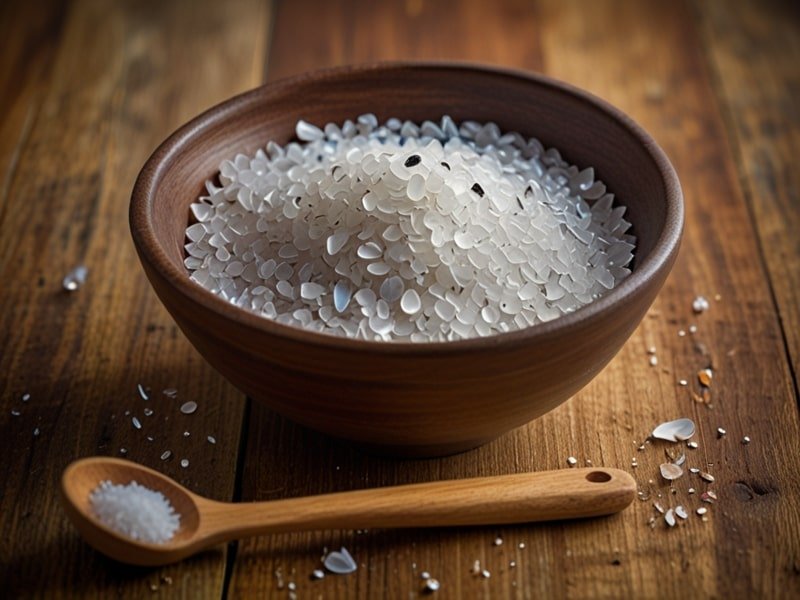The Essence of Fleur de Sel
Okay, let’s talk salt. Yes, salt. You probably already have it sitting on your kitchen counter, but I bet it’s not Fleur de Sel. This artisanal sea salt is a whole different level of saltiness—kind of like the difference between a basic ketchup and some fancy truffle ketchup (I know, it sounds fancy, but stick with me). Fleur de Sel, which means “flower of salt” in French, is known for its delicate texture, mineral-rich flavor, and, let’s be honest, its luxury status. It’s often called the caviar of salt—just the sprinkle you need to make your meals feel a little more special.
This post is all about Fleur de Sel. We’ll dive deep into what makes it so unique, its rich history, how to use it in your cooking, and why it’s totally worth the splurge. So, whether you’re a seasoned chef or a casual home cook, get ready to elevate your meals with this beautiful, delicate salt.
What is Fleur de Sel?
At its core, Fleur de Sel is a rare and premium sea salt. It’s formed on the surface of salt ponds during the evaporation of seawater—kind of like Mother Nature’s magic trick, but with a little help from the sun and wind. The name Fleur de Sel refers to the flaky, delicate crystals that rise to the surface, looking almost like little flowers. These crystals are collected by hand using the traditional technique passed down for generations.
The process of harvesting Fleur de Sel is a labor of love. It requires the perfect balance of weather conditions—hot, dry days with just the right amount of wind. The workers, known as paludiers, are true experts in their craft. They scrape the salt from the surface of the ponds with wooden rakes. This method is slow, painstaking, and results in just a small amount of salt. But that’s what makes it so special. The salt’s delicate texture and moisture content contribute to its complex flavor, making it a luxury seasoning.
The History and Origins of Fleur de Sel
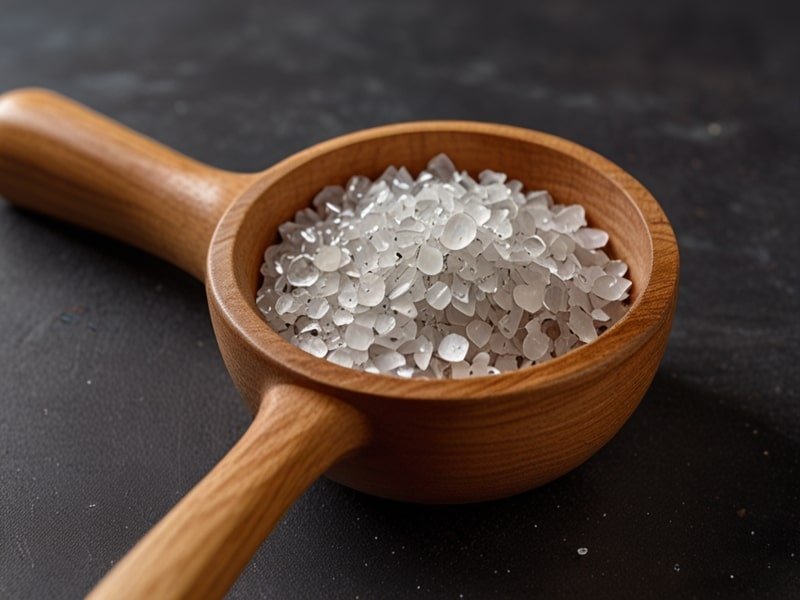
The history of salt is ancient, but Fleur de Sel really found its home in the Guerande region of France. For centuries, the Celts perfected the technique of harvesting salt from the coast, and it wasn’t long before Fleur de Sel became a prized commodity, used by royalty and aristocrats. There’s something inherently classy about it—maybe it’s because it’s a rarity, or maybe it’s because the process behind it feels so artisanal.
This salt, especially from Guerande, has been harvested since the 8th century, and the craft continues to thrive today. The paludiers still use the same traditional methods, making Fleur de Sel not just a seasoning, but a taste of history. Each flake tells the story of this centuries-old tradition.
How is Fleur de Sel Harvested?
So, how does this delicate magic happen? Fleur de Sel is harvested on sunny days with gentle winds. It’s not the kind of salt you just scoop up from the bottom of a pond. Instead, it forms on the surface of salt flats after the seawater has evaporated, leaving behind a thin, soft layer of salt crystals. The process requires a skillful touch: the paludiers gently skim the top of the pond with their wooden rakes. If they’re not careful, they’ll disturb the salt below, which is more coarse and used for other kinds of sea salt. Timing is everything, and the right weather conditions—warmth, low humidity, and a breeze—are all crucial for the perfect harvest.
The beauty of it all is that it’s still very much a hands-on, slow process. While most salts are harvested using machinery, Fleur de Sel requires a personal touch. It’s part of the reason why it’s so precious. When you buy Fleur de Sel, you’re paying for much more than just the salt itself. You’re paying for a labor-intensive process that has remained unchanged for centuries.
Fleur de Sel vs. Regular Sea Salt: What’s the Difference?
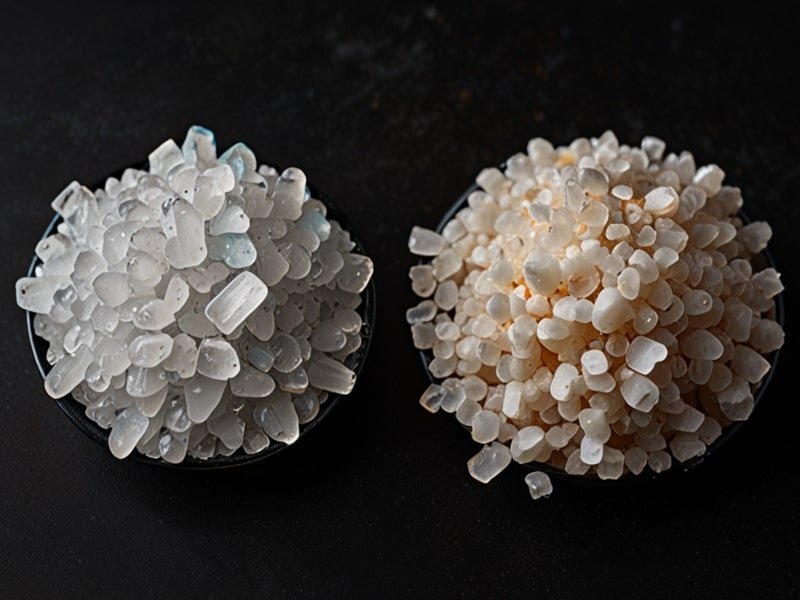
If you’re wondering what makes Fleur de Sel so special, it’s not just about the price tag. The difference between Fleur de Sel and regular sea salt comes down to texture, flavor, and the way it’s harvested. Let’s break it down:
1. Texture and Moisture
Fleur de Sel is light, flaky, and slightly moist, which gives it a delicate crunch when sprinkled on dishes. Regular sea salt, on the other hand, tends to be drier and has larger, more uniform crystals. Fleur de Sel dissolves slowly, which makes it perfect for sprinkling over finished dishes, where it adds that satisfying burst of flavor. Regular sea salt is often used in cooking or baking, where its larger crystals dissolve faster.
2. Flavor Profile
Fleur de Sel has a subtle, nuanced brininess. It’s not as sharp or overpowering as regular sea salt, which makes it ideal for enhancing flavors without overshadowing them. If you’ve ever tasted a dish finished with Fleur de Sel, you know that it adds a kind of depth to the flavor profile, almost like a secret ingredient that brings everything together. Regular sea salt, by comparison, is more straightforward in its saltiness.
3. Harvesting Process
The harvesting of Fleur de Sel is an art form. It’s hand-skimmed from the surface of salt ponds, while regular sea salt is typically harvested from deeper in the ponds or through more mechanical means. The artisanal harvesting method contributes to the salt’s higher price and its exceptional quality.
4. Best Uses
Fleur de Sel is a finishing salt. Sprinkle it on your dish right before serving, and let it do its magic. It’s especially great on meats, fish, salads, and even desserts. Regular sea salt is more versatile for everyday cooking, whether you’re seasoning a stew or making a batch of cookies.
Health Benefits of Fleur de Sel
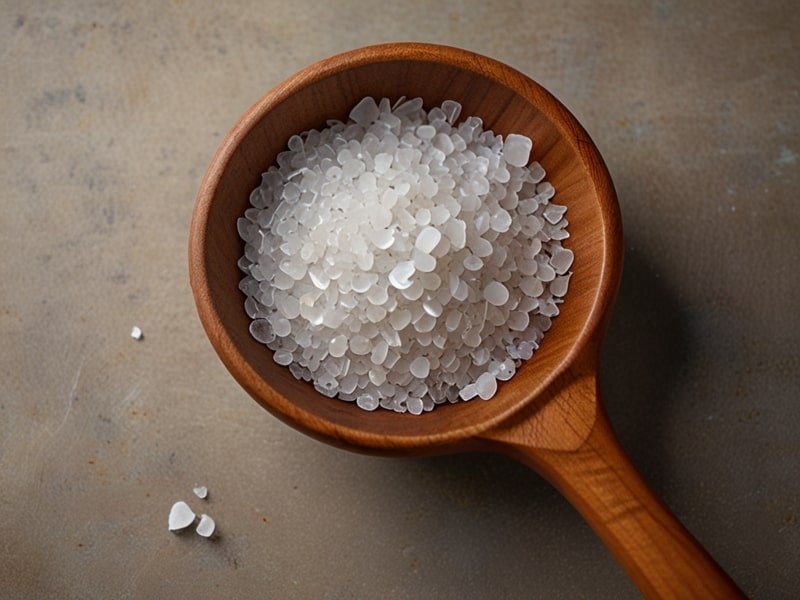
While salt should always be used in moderation, Fleur de Sel does have some health benefits that set it apart from regular table salt. It contains trace minerals like magnesium, calcium, potassium, and iron—minerals that are naturally found in seawater. These minerals can support your body in various ways:
- Magnesium: Helps with muscle function and reduces stress.
- Calcium: Important for bones and teeth.
- Potassium: Helps maintain fluid balance and normal nerve function.
- Iron: Vital for blood health and oxygen transport.
Of course, you still need to be mindful of your salt intake, but Fleur de Sel’s mineral content makes it a slightly more nutritious choice compared to more refined salts. It’s an added bonus for anyone looking to elevate their dishes while also getting a little extra from their seasoning.
Discover more about Marjoram and its benefits in our detailed guide: Marjoram.
How to Use Fleur de Sel in Cooking
Here’s where the fun begins: using Fleur de Sel in your cooking. Since it’s a finishing salt, you’ll want to add it to your dishes just before serving, allowing the delicate crystals to melt on the surface for a burst of flavor. Here are a few ways to incorporate it into your meals:
1. As a Finishing Salt for Meats and Fish
Sprinkle Fleur de Sel on top of grilled meats, roasted chicken, or seared fish for a simple yet elegant finish. The salt enhances the natural flavors of the protein and adds a satisfying crunch. Just a pinch will do, so don’t go overboard!
2. On Fresh Vegetables and Salads
Fleur de Sel is perfect for fresh salads and vegetables. Its mild brininess elevates the natural sweetness of tomatoes, cucumbers, or leafy greens. It’s also fantastic on roasted veggies like asparagus or Brussels sprouts.
3. In Baking and Pastries
Yes, Fleur de Sel can be used in desserts too! It’s amazing on chocolate chip cookies, brownies, and even caramel. The subtle saltiness pairs perfectly with the sweetness, creating that irresistible balance of flavors.
4. In Cocktails and Beverages
Ever tried rimming your cocktail glass with Fleur de Sel? If not, you’re missing out. It adds a unique twist to margaritas, daiquiris, or gin and tonics. Just a little sprinkle on the rim adds an unexpected complexity to the drink.
Sustainability and Environmental Impact of Fleur de Sel
The process of harvesting Fleur de Sel is surprisingly sustainable, as it relies on natural evaporation rather than machinery. However, like anything, overharvesting can have negative consequences on the environment. Luckily, many Fleur de Sel producers are dedicated to sustainable practices, ensuring that the salt ponds remain healthy for generations to come.
When shopping for Fleur de Sel, look for producers who emphasize eco-friendly methods and sustainable harvesting. It’s a small way you can support a product that respects the planet while still indulging in its luxury.
Where to Buy Fleur de Sel
Fleur de Sel isn’t something you’ll find at your average grocery store, but it’s available at specialty food stores, high-end markets, and online retailers. When shopping, make sure to check the label for authenticity. Fleur de Sel from regions like Guerande or the Camargue is considered top-tier.
Don’t be afraid to splurge a little—after all, it’s the little things in cooking that make all the difference, and Fleur de Sel can completely transform a dish.
The Versatility of Fleur de Sel in the Kitchen
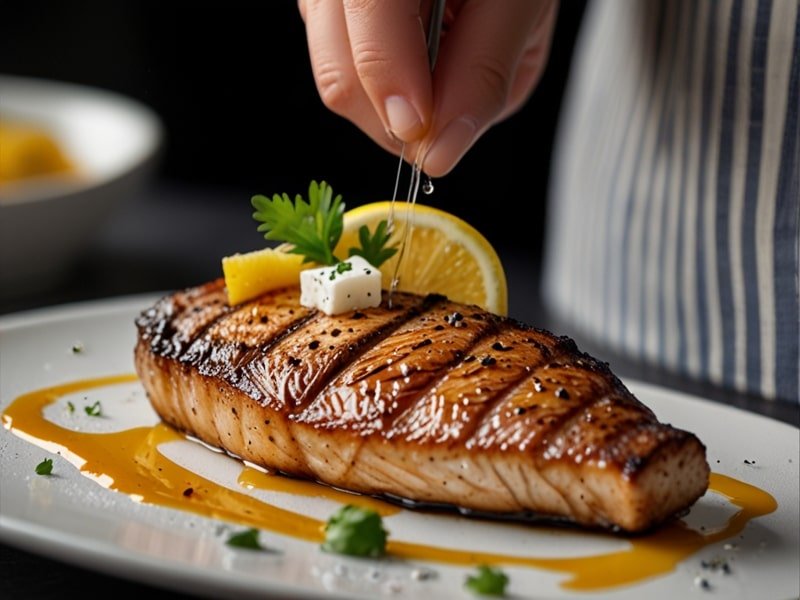
You might be thinking, “Okay, this all sounds great, but how often can I really use this special salt?” Well, the answer is—pretty much all the time. Fleur de Sel is incredibly versatile, and once you start experimenting with it, you’ll wonder why you didn’t try it sooner.
1. On Freshly Baked Bread
Imagine this: a warm, freshly baked loaf of sourdough or a soft baguette, still slightly crispy on the outside. Now, sprinkle a little Fleur de Sel on top. It’s a simple touch, but it turns your bread from “good” to “gourmet” in seconds. The crunchy, delicate salt crystals on the warm bread offer a contrast of textures that will have you hooked. It’s one of those little tricks that high-end restaurants use to add a little extra finesse to their bread basket.
You can also sprinkle it over garlic bread or use it on a buttered roll, pairing perfectly with any meal. It’s such an easy way to elevate your bread without doing much work at all.
2. Enhancing Savory Dishes
As mentioned earlier, Fleur de Sel is the perfect finishing touch for meats and seafood. If you’ve just grilled a steak or roasted a chicken, don’t forget to sprinkle some Fleur de Sel right before serving. The salt enhances the savory flavors, adding a sophisticated crunch that will make the meat even juicier. It’s particularly great on grilled fish—think salmon or tuna—where the natural flavors of the fish are highlighted by the delicate touch of the salt.
Another fantastic use is on fresh, roasted vegetables. After roasting your favorite veggies (I’m talking about crispy Brussels sprouts, sweet potatoes, or even cauliflower), sprinkle a little Fleur de Sel to bring out the flavor of the caramelized edges. Trust me, it makes all the difference.
3. Unconventional Pairings: Fleur de Sel and Chocolate
Here’s a fun fact: Fleur de Sel pairs beautifully with chocolate. If you haven’t tried the combination yet, you’re in for a treat. The salt contrasts the richness of chocolate, enhancing its depth and flavor. Try adding a few flakes on top of a chocolate chip cookie, brownie, or chocolate truffle. The salt brings out the sweetness of the chocolate and adds an extra layer of sophistication to your dessert.
For a simple yet delicious treat, sprinkle Fleur de Sel on a piece of dark chocolate. Let the salt settle into the crevices of the chocolate, and take a bite. You’ll experience the perfect balance of salty and sweet that hits all the right notes.
It’s a pairing you’ll find in high-end chocolatiers, and it’s so easy to replicate at home.
4. Boosting Your Breakfast
Fleur de Sel doesn’t just belong to dinner. It can also elevate your breakfast game. Take your scrambled eggs, for instance—usually, you just toss in some regular salt, right? Well, adding Fleur de Sel at the end of cooking gives the eggs a creamy texture and boosts the flavor without making them taste too salty. It’s an elegant way to upgrade a basic breakfast.
Or try it on your avocado toast. Add a sprinkle of Fleur de Sel to that creamy avocado spread, and you’ll notice how the salt balances out the richness of the avocado, making the whole dish taste more complex. Pair it with some fresh herbs or a poached egg for an extra touch.
Fleur de Sel as an Ingredient in Gourmet Cooking
While it’s often used as a finishing salt, Fleur de Sel can also be incorporated into your cooking process in more creative ways. Sure, you can sprinkle it on at the end, but if you want to get more adventurous, why not bake it into your dishes?
1. Caramel and Fleur de Sel
One of the most delightful uses of Fleur de Sel is in caramel dishes. The balance between the sweet richness of caramel and the salty crunch of Fleur de Sel is simply heavenly. If you’ve ever had salted caramel ice cream or salted caramel sauce, you know how addictive this combination can be. The Fleur de Sel enhances the caramel’s complexity, giving it an added layer of flavor that makes it more refined.
Making your own salted caramel at home is surprisingly easy. All you need is butter, sugar, cream, and a pinch of Fleur de Sel. As the caramel cooks, the salt begins to dissolve, creating a smooth, balanced flavor. Use it as a topping for ice cream, cakes, or even pour it over a batch of fresh popcorn for a unique snack.
2. Flavored Butters and Sauces
Another way to incorporate Fleur de Sel into your cooking is by using it in flavored butters or sauces. Take a soft, unsalted butter and mix in a pinch of Fleur de Sel, along with some fresh herbs like parsley, thyme, or rosemary. You can also add a little garlic for an extra punch of flavor. This simple compound butter is perfect for spreading on crusty bread, topping steaks, or adding a savory touch to vegetables.
You can also create your own finishing sauces for pasta or grilled dishes. Just melt some butter, add a pinch of Fleur de Sel, a dash of lemon juice, and perhaps a bit of fresh garlic, and you’ve got yourself a quick and easy sauce that transforms any dish. It’s a classic way to enhance your meals, with little effort involved.
Learn more about Fleur de Sel and its uses in this AllRecipes guide: What is Fleur de Sel?.
Fleur de Sel in Cocktails and Beverages
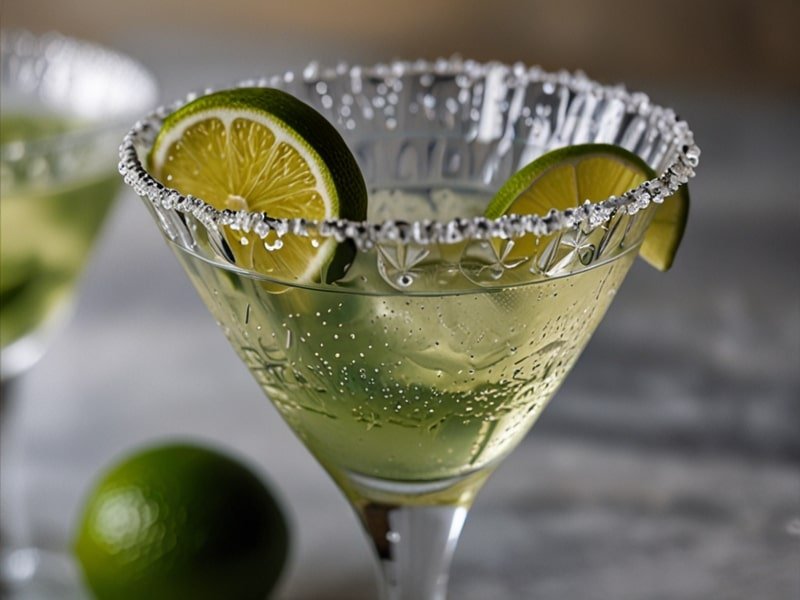
You may not have considered adding salt to your drinks, but Fleur de Sel can really up your cocktail game. The salt enhances the flavors in a drink, making them more vibrant and complex. As mentioned earlier, Fleur de Sel is often used to rim cocktail glasses, and this technique is a game-changer for cocktails like margaritas or tequila-based drinks. The salt balances the acidity and sweetness of citrus, bringing the entire cocktail into perfect harmony.
But Fleur de Sel doesn’t have to stop at margaritas. Think beyond the classic salt rim and add a pinch of Fleur de Sel directly into your cocktails. Try it in a gin and tonic, where it adds an unexpected depth and an intriguing finish. Or, for a refreshing twist, add it to a mojito to enhance the minty flavors. You can even stir a little Fleur de Sel into your iced tea for a sophisticated, savory twist on a simple drink.
Storing and Using Fleur de Sel
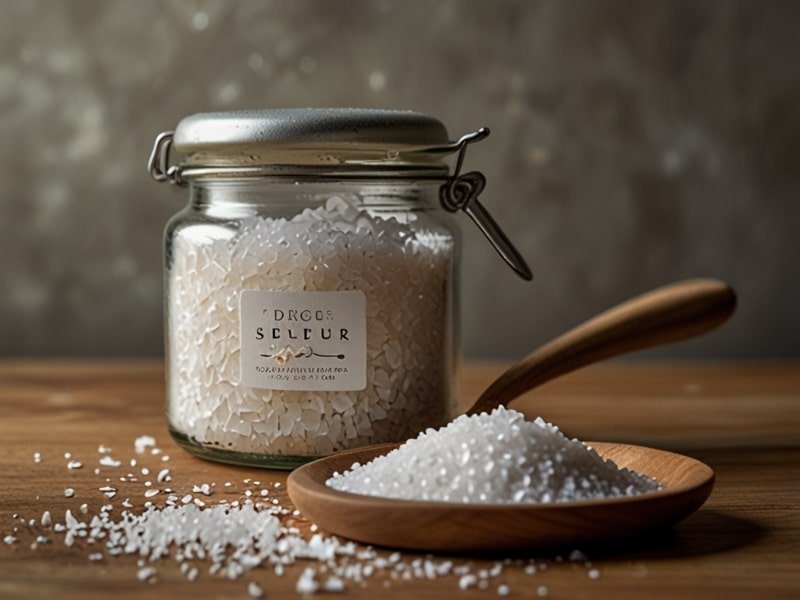
So, you’ve got your jar of Fleur de Sel, but how do you store it to keep it in top condition? While it doesn’t require refrigeration, Fleur de Sel should be stored in a cool, dry place, away from direct sunlight. Ideally, keep it in an airtight container to protect it from moisture and preserve its delicate texture.
Since Fleur de Sel is best used as a finishing touch, you won’t need to use it in large quantities, so your jar should last a while. But trust me, once you start using it regularly, it might just become a staple in your kitchen.
Conclusion: Making Every Meal Special with Fleur de Sel
At the end of the day, Fleur de Sel is more than just a luxury ingredient. It’s a way to bring a little more thought, care, and creativity to your cooking. It doesn’t require a special occasion to shine—just a simple meal that needs that extra something. With its delicate texture, balanced flavor, and versatility, Fleur de Sel transforms even the most basic dishes into something extraordinary.
If you’ve never tried it, go ahead and sprinkle some on your next meal—you might just wonder how you ever lived without it. Whether you’re finishing a savory dish, baking a batch of cookies, or creating a signature cocktail, this artisanal salt will bring your culinary creations to life.
Next time you’re at the store or browsing online, treat yourself to a jar of Fleur de Sel. It’s a small investment that will pay off big time in flavor. Plus, you’ll have a little piece of French culinary history in your kitchen. Now that’s something worth celebrating.

